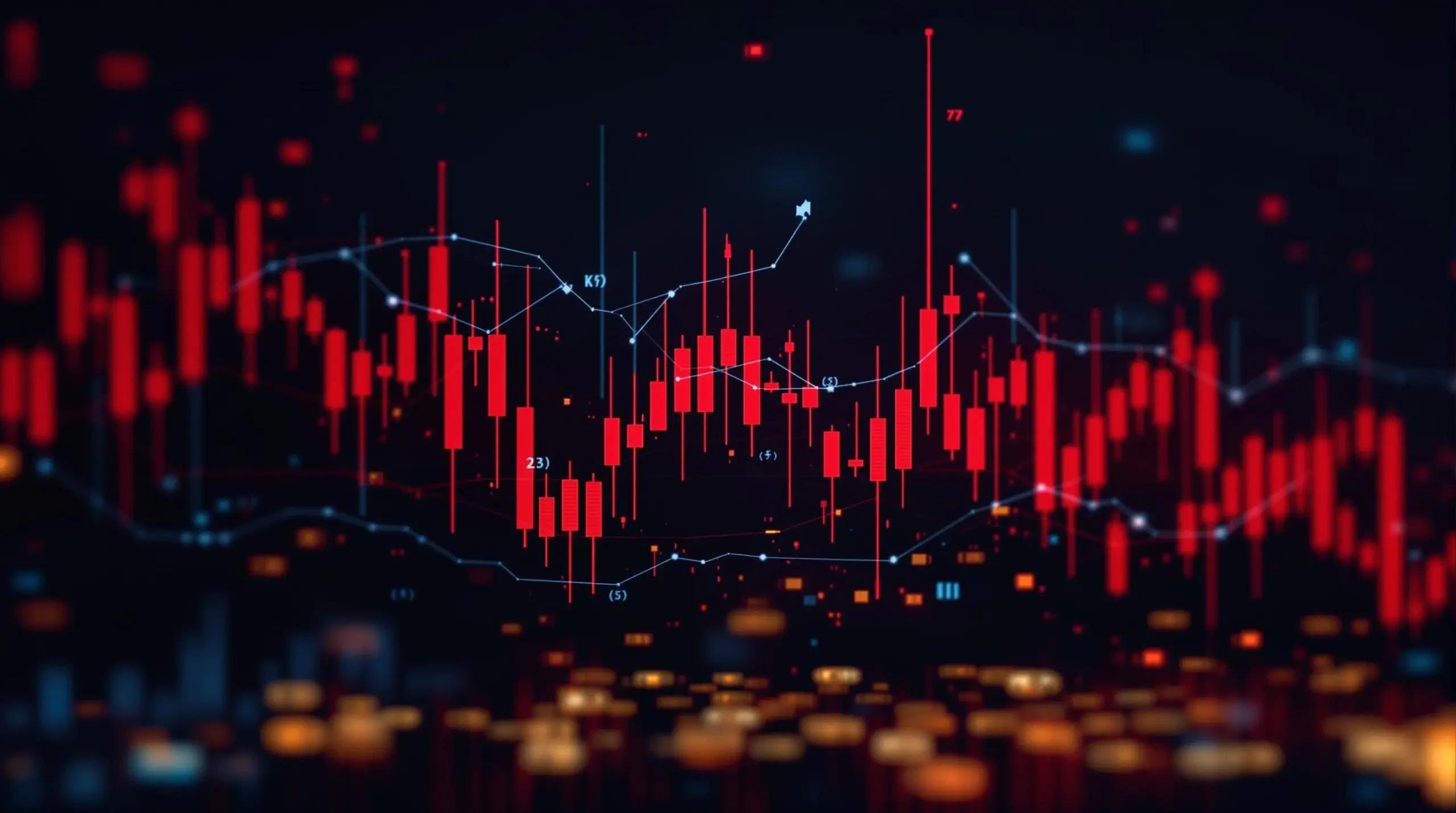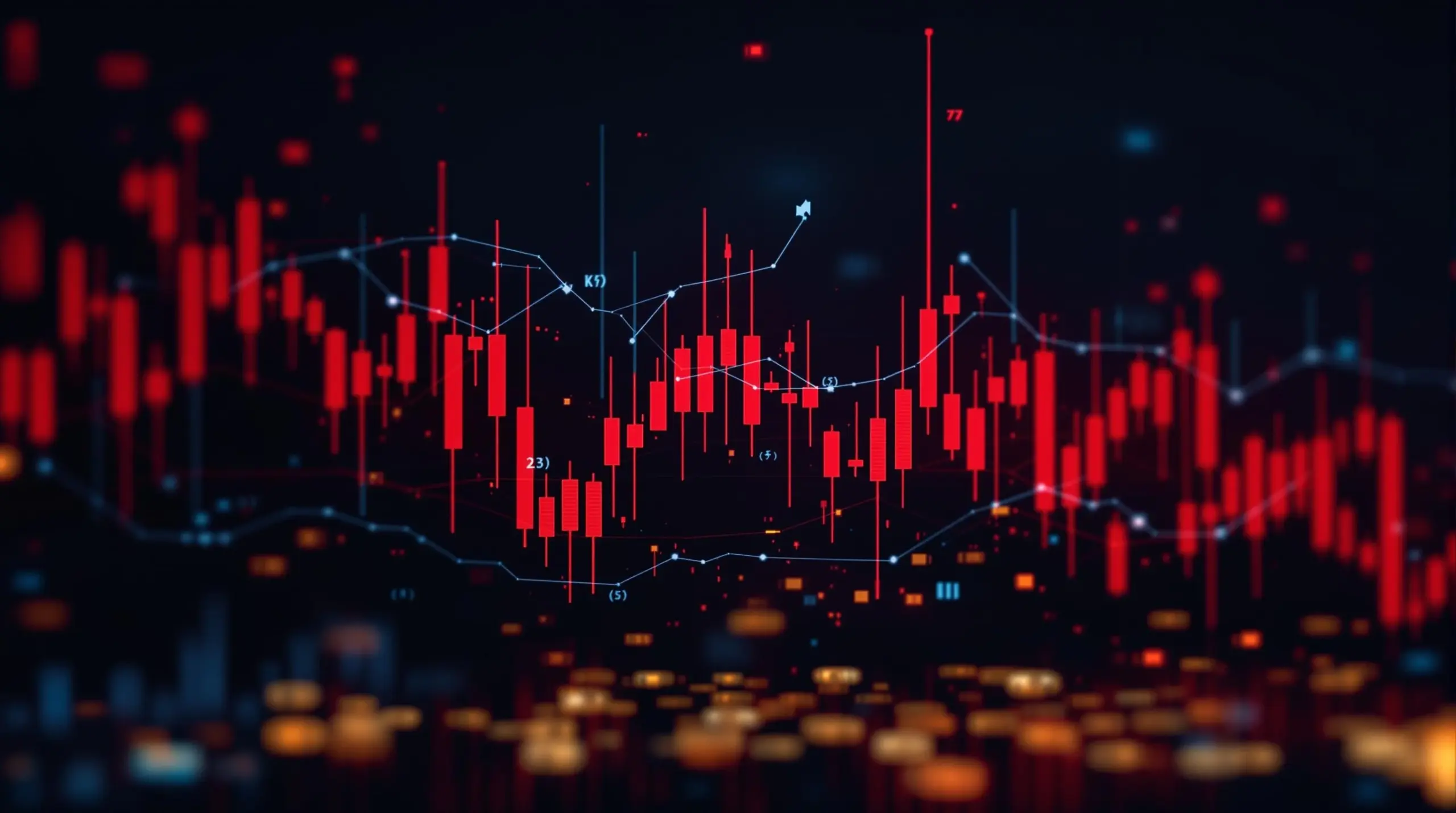BitcoinWorld

Crypto Futures Liquidation: Urgent Warning as $107 Million Vanishes in an Hour
The cryptocurrency market, a realm known for its exhilarating highs and stomach-churning lows, has once again delivered a stark reminder of its inherent volatility. In a dramatic turn of events that sent ripples across trading desks worldwide, a staggering $107 million worth of crypto futures contracts were liquidated in just the past hour. This isn’t an isolated incident; it’s part of a larger, more ominous trend, with nearly $989 million in futures liquidations recorded over the last 24 hours. For many, this represents a sudden and painful loss, a vivid illustration of the razor-edge risks associated with leveraged trading. But what exactly does this mean, and why are we seeing such a massive crypto futures liquidation event?
What Just Happened? Decoding the Crypto Futures Liquidation Event
Imagine a high-stakes game where players borrow money to amplify their bets. That’s essentially what happens in futures trading, especially with leverage. When a trader opens a futures position, they’re not buying or selling the actual asset (like Bitcoin or Ethereum) but rather a contract to buy or sell it at a predetermined price in the future. To increase potential profits, many traders use leverage, meaning they put down a small amount of their own capital (margin) and borrow the rest.
A liquidation occurs when a trader’s margin balance falls below a certain threshold, typically due to adverse price movements against their position. Exchanges automatically close these positions to prevent further losses for both the trader and the exchange. The $107 million figure represents the total value of these forced closures in a very short timeframe, indicating a rapid and significant price swing that caught many leveraged traders off guard. The larger 24-hour figure of $989 million paints an even broader picture of the immense financial pressure experienced by the market.
Think of it like this:
- You open a long position: You bet the price will go up.
- You use 10x leverage: For every $1 you put in, you control $10 worth of crypto.
- The price drops significantly: Your initial $1 (and the borrowed $9) is quickly eroded.
- Margin Call/Liquidation: If the price drops enough, your position is automatically closed by the exchange to protect the borrowed funds, and your initial capital is lost.
This rapid succession of forced closures can create a domino effect, often referred to as a liquidation cascade, further exacerbating price declines and leading to even more liquidations.
Why Does Crypto Market Volatility Lead to Such Events?
The very nature of the cryptocurrency market—its crypto market volatility—is a double-edged sword. While it offers unparalleled opportunities for rapid gains, it also presents substantial risks. Unlike traditional markets, crypto markets operate 24/7, are less regulated, and are highly susceptible to sudden shifts in sentiment, news, and whale movements. This inherent unpredictability is a primary driver of large-scale liquidation events.
Several factors contribute to this extreme volatility:
- Low Liquidity (for some assets): While major cryptocurrencies like Bitcoin and Ethereum have deep liquidity, many altcoins do not. Lower liquidity means that even relatively small buy or sell orders can cause significant price swings.
- News and Sentiment: Regulatory announcements, major hacks, celebrity endorsements, or even a single tweet can send prices soaring or plummeting within minutes.
- Macroeconomic Factors: Broader economic trends, interest rate changes, or global geopolitical events can also influence investor appetite for risk assets like cryptocurrencies.
- Interconnectedness: The crypto market is highly interconnected. A price drop in Bitcoin can often drag down the entire market, triggering liquidations across various altcoin futures positions.
When these factors combine, they can create the perfect storm for rapid price movements that quickly push leveraged positions past their liquidation points, leading to the kind of numbers we’ve just witnessed.
Navigating the Perils of Leveraged Trading
Leveraged trading, while offering the allure of magnified profits, significantly amplifies risk. It’s a powerful tool, but one that demands extreme caution and a deep understanding of its mechanics. For every dollar of profit you could potentially gain, you risk losing many more, often your entire initial investment, in a flash.
Consider the stark difference between spot trading and leveraged futures trading:
| Feature | Spot Trading | Leveraged Futures Trading |
|---|---|---|
| Ownership | You own the underlying asset. | You own a contract, not the asset. |
| Risk Exposure | Limited to your initial investment. | Potentially much higher than initial investment (though most exchanges limit losses to margin). |
| Profit/Loss | Directly proportional to price movement. | Magnified by the leverage ratio. |
| Liquidation Risk | None (unless selling under duress). | High, if price moves against your position. |
The allure of leveraged trading is undeniable: turning a small capital base into significant gains. However, this appeal often overshadows the inherent dangers, particularly for inexperienced traders who might not fully grasp the concept of margin maintenance and liquidation prices. It’s crucial to approach leveraged positions with a robust risk management strategy, treating them as extremely high-risk ventures.
Understanding Futures Trading Risks and Mitigation
Beyond the general volatility, futures trading risks are specific and need careful consideration. The primary risk is, of course, liquidation, but there are others:
- Counterparty Risk: While exchanges mitigate this, there’s always a theoretical risk associated with the exchange itself.
- Funding Rates: In perpetual futures contracts, traders pay or receive funding rates periodically, which can eat into profits or increase losses, especially in volatile markets.
- Slippage: During periods of high volatility, your order might not be filled at the exact price you expect, leading to slippage and potentially worse entry/exit points.
- Over-leveraging: The biggest pitfall. Using excessively high leverage (e.g., 50x, 100x) means even a tiny price fluctuation can wipe out your entire margin.
So, how can traders mitigate these risks? It’s not about avoiding futures trading entirely if you understand it, but about approaching it with discipline and a strong defensive strategy:
- Use Stop-Loss Orders: This is arguably the most critical tool. A stop-loss order automatically closes your position when the price reaches a predetermined level, limiting your potential losses.
- Manage Your Leverage: Resist the temptation of extremely high leverage. Start with lower leverage ratios (e.g., 2x-5x) until you are highly proficient.
- Understand Your Liquidation Price: Always know at what price your position will be liquidated. Most exchanges provide this information.
- Don’t Over-Allocate: Only trade with capital you can afford to lose. Never put a significant portion of your portfolio into highly leveraged positions.
- Monitor Market Conditions: Stay updated on news, market sentiment, and technical analysis. Avoid trading during periods of extreme uncertainty if you’re not an experienced professional.
Effective risk management is not just a suggestion; it’s a necessity for survival in the fast-paced world of crypto futures.
Preventing Liquidation Cascades: Strategies for Traders
The concept of liquidation cascades is a terrifying reality for many traders. It’s a vicious cycle: a price drop triggers initial liquidations, which adds selling pressure, leading to further price drops, which in turn trigger more liquidations, and so on. This feedback loop can accelerate market downturns dramatically.
While individual traders cannot prevent a market-wide cascade, they can certainly protect themselves from being caught in one. Here are strategies to consider:
- Diversify Your Portfolio: Don’t put all your eggs in one basket. Spreading your investments across different assets and strategies can cushion the blow of a single asset’s downturn.
- Take Profits Regularly: Don’t be greedy. Secure profits when you have them, especially after significant price appreciation. Reinvesting a portion of profits can also help build a stronger capital base.
- Maintain Sufficient Margin: Always keep more margin than the minimum required. This provides a buffer against sudden price movements and gives you time to react if the market turns against you.
- Avoid Emotional Trading: Fear of missing out (FOMO) and fear of losing (FUD) are powerful emotions that can lead to irrational decisions. Stick to your trading plan and avoid impulsive trades based on market hype or panic.
- Utilize Cross Margin (Cautiously): Some platforms offer cross margin, where your entire portfolio acts as collateral. While this can prevent individual position liquidations, it also means a large loss can impact your entire account. Use with extreme caution and clear understanding.
- Educate Yourself Continuously: The crypto market evolves rapidly. Stay informed about new trading tools, market analysis techniques, and regulatory changes.
By implementing these strategies, traders can build resilience against the inherent risks of the crypto market and minimize their exposure to liquidation events.

The Human Element: Impact on Traders
Beyond the numbers, these massive liquidation events have a profound human impact. For many, the funds lost represent significant savings, hard-earned capital, or even life-changing opportunities that evaporated in minutes. The emotional toll of such losses can be immense, leading to stress, anxiety, and burnout. It underscores the importance of mental resilience and a balanced approach to trading.
It also highlights the need for robust investor protection mechanisms and clearer educational resources from exchanges and platforms. While the “buyer beware” principle is strong in crypto, the rapid growth of leveraged products necessitates a higher standard of care and transparency.
Actionable Insights for Navigating Volatility
So, what can you, as a participant or observer of this dynamic market, take away from this urgent warning?
- Prioritize Risk Management: This cannot be overstated. Understand your risk tolerance and implement strict stop-loss orders. Never risk more than you can afford to lose.
- Educate Yourself: Before diving into complex instruments like futures, spend ample time understanding how they work, the associated risks, and the strategies to manage them.
- Start Small: If you’re new to leveraged trading, begin with very small position sizes and low leverage. Gain experience before scaling up.
- Stay Informed, Not Obsessed: Keep up with market news and analysis, but avoid constant screen-watching, which can lead to emotional decisions.
- Consider Long-Term Investing: For many, a “buy and hold” strategy for fundamentally strong assets may be less stressful and potentially more rewarding than high-frequency leveraged trading.
The recent liquidation figures serve as a powerful reminder that while the crypto market offers incredible opportunities, it also demands respect for its volatility and a disciplined approach to risk.
To learn more about the latest crypto market trends, explore our article on key developments shaping Bitcoin price action.
Summary: A Harsh Lesson in Market Dynamics
The past hour’s staggering $107 million crypto futures liquidation, culminating in nearly a billion dollars over 24 hours, serves as a harsh but invaluable lesson in the unpredictable nature of the cryptocurrency market. It underscores the amplified risks of leveraged trading and the critical importance of robust risk management strategies. While the allure of magnified profits is strong, the perils of crypto market volatility and futures trading risks are equally potent. Traders must approach these instruments with caution, discipline, and a clear understanding of how to prevent devastating liquidation cascades. Ultimately, success in this environment hinges not just on predicting price movements, but on skillfully navigating the inherent dangers of leveraged trading and protecting capital against rapid shifts. Stay safe, stay informed, and trade wisely.
Frequently Asked Questions (FAQs)
Q1: What exactly is crypto futures liquidation?
A1: Crypto futures liquidation is the forced closure of a trader’s leveraged position by an exchange due to insufficient margin to cover potential losses. This happens when the market price moves significantly against the trader’s open position, and their initial collateral (margin) is no longer enough to maintain the trade. The exchange liquidates the position to prevent the trader from incurring further debt and to protect the borrowed funds.
Q2: Why do large liquidation events occur in the crypto market?
A2: Large liquidation events are primarily driven by the inherent high volatility of the crypto market. Sudden, sharp price movements (up or down) can quickly push many leveraged positions to their liquidation points. Factors contributing include major news events, macroeconomic shifts, significant whale activity, and the interconnectedness of various crypto assets, which can lead to a domino effect known as a liquidation cascade.
Q3: How does leverage contribute to liquidations?
A3: Leverage allows traders to open positions larger than their initial capital by borrowing funds from the exchange. While this can magnify profits, it also magnifies losses. With high leverage, even a small adverse price movement can quickly erode a trader’s margin, leading to a margin call or immediate liquidation because the borrowed funds are at risk. The higher the leverage, the smaller the price movement required to trigger a liquidation.
Q4: What is a liquidation cascade?
A4: A liquidation cascade is a chain reaction where initial liquidations trigger further price drops, which in turn trigger more liquidations. When a position is liquidated, the underlying assets are often sold off by the exchange, adding selling pressure to the market. This increased selling pressure can push prices down further, causing more leveraged positions to hit their liquidation thresholds, creating a rapid downward spiral.
Q5: How can traders protect themselves from liquidation?
A5: Traders can protect themselves by implementing robust risk management strategies. Key methods include using stop-loss orders to limit potential losses, using lower leverage ratios, maintaining sufficient margin in their accounts, diversifying their portfolios, and avoiding over-allocation of capital to single trades. Continuous education and avoiding emotional trading decisions are also crucial.
Did this article help you understand the recent crypto market turmoil and the intricacies of futures liquidations? Share this crucial information with your friends, fellow traders, and anyone interested in navigating the volatile world of cryptocurrencies. Your shares help us spread awareness and foster a more informed trading community. Let’s learn and grow together!
This post Crypto Futures Liquidation: Urgent Warning as $107 Million Vanishes in an Hour first appeared on BitcoinWorld and is written by Editorial Team





